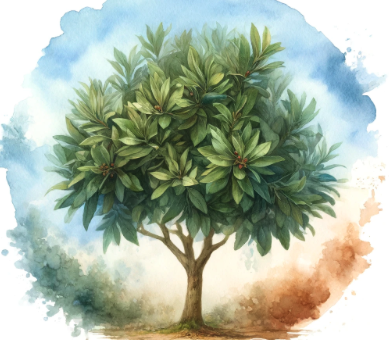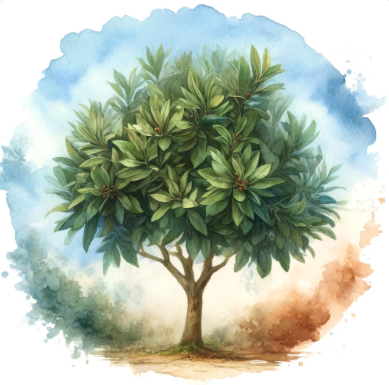
Bay leaves, known scientifically as Laurus nobilis, have been cherished for their symbolic and practical uses for over two thousand years.
Originating from the Mediterranean region, the bay tree has been intertwined with myth, medicine, and magic.
Sacred Symbolism in Ancient Times
In classical antiquity, the bay tree was sacred to Apollo, the sun god, and Asclepius, the god of medicine. These deities symbolized healing and enlightenment, and the bay tree, in turn, came to represent victory, honor, and good fortune.
The ancient Romans adorned their homes with boughs of bay during the New Year celebrations, a practice that carried over into early Christian traditions as a symbol of resurrection and eternal life.
Bay leaves were also believed to possess protective qualities against evil spirits, ghosts, and witchcraft. Planting a bay tree near one’s home was thought to guard against the plague and misfortune.
Moreover, the trees were believed to be immune to lightning, providing a safe haven during thunderstorms—a belief so strong that the Roman emperor Tiberius wore a crown of laurel during such weather.

The Laurel Wreath: A Symbol of Honor and Victory
The laurel wreath, made from bay leaves, holds a prestigious place in history. In Ancient Greece, these wreaths were awarded to victors in athletic competitions, particularly the Olympics.
Greek mythology tells the tale of Apollo and Daphne, a nymph transformed into a laurel tree to escape Apollo’s relentless pursuit. In his grief, Apollo fashioned a crown from her branches, thus linking the laurel with honor and victory.
The laurel wreath became a status symbol for the elite, used in ceremonies and depicted in art and currency. Historical figures such as Charlemagne and Napoleon were often portrayed wearing laurel crowns, signifying their power and achievements.
Bay Leaves in Folklore and Superstition
Bay leaves have long been revered for their supposed supernatural properties. They were believed to protect against disease, with people carrying them for personal protection.
The leaves were also used in various forms of divination. Soothsayers would burn bay leaves and interpret the flames or inhale the smoke to gain prophetic insights. The sound of bay leaves burning could even predict good or bad luck.
One popular superstition involves placing bay leaves under one’s pillow on the eve of St. Valentine’s Day to dream of a future lover. Similarly, if a bay tree suddenly withered, it was considered an ominous sign of impending disaster, such as the death of a family member or a national catastrophe.

Medicinal Uses of Bay Leaves
Throughout history, bay leaves have been prized for their medicinal properties. Ancient cultures used them to treat a wide range of ailments.
The Romans used bay leaves and berries to treat liver disorders, while herbalists in later centuries employed bay in remedies for rheumatism and other conditions. Nicholas Culpeper, a famous 17th-century herbalist, noted that bay berries were effective against the poisons of venomous creatures and the stings of wasps and bees.
Bay leaves were also used to ward off epidemics, often consumed as tea or used in baths. The oil extracted from bay berries was applied to sprains and used as eardrops, highlighting the herb’s versatile medicinal applications.

Bay Leaves in Modern Traditions
While many of the ancient beliefs and practices surrounding bay leaves have faded, some traditions persist. Bay leaves continue to be used in culinary arts for their aromatic qualities, enhancing the flavor of various dishes. They are also popular in aromatherapy and natural medicine, where their essential oils are valued for their therapeutic benefits.
In contemporary culture, the symbolism of the laurel wreath endures in awards and honors, such as the term “Nobel laureate.” This enduring symbol of excellence and achievement reflects the deep-rooted legacy of bay leaves in human history.

